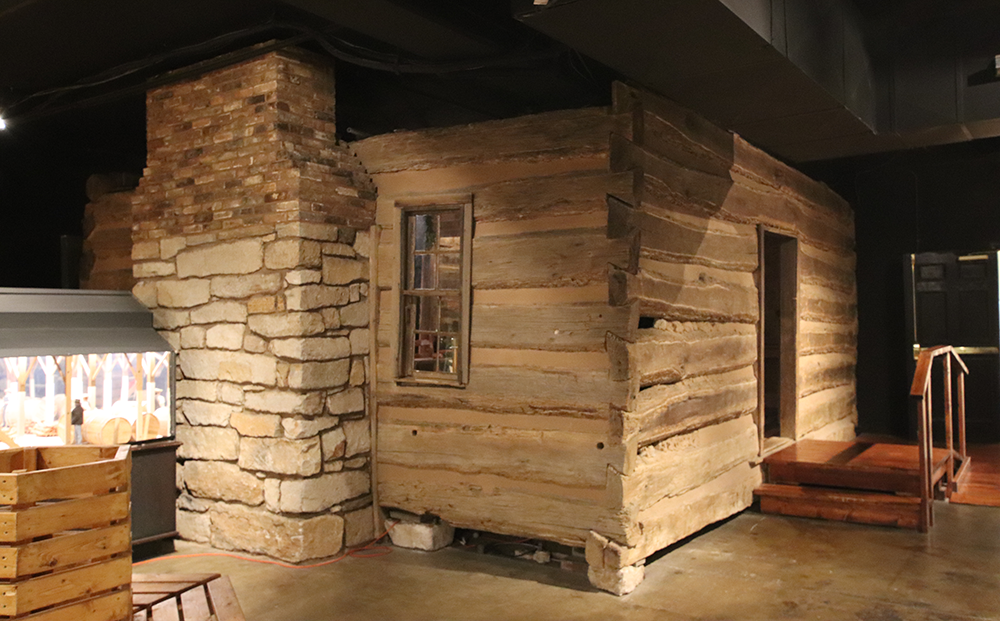
Written by Meghan E. Gattignolo
Want to see what life was like for early Montgomery County residents? Take a look inside the home of Barnabas Powers.
Powers built his home in Palmyra around 1842 and lived in it with his family until his death. In the 1990s, the house was dismantled log by log and reassembled inside the Customs House Museum & Cultural Center. The items exhibited inside the house now did not belong to the Powers family, but every item is contemporary to rural Tennessee in the 19th century. Every piece tells a story about what their everyday lives would have looked like.
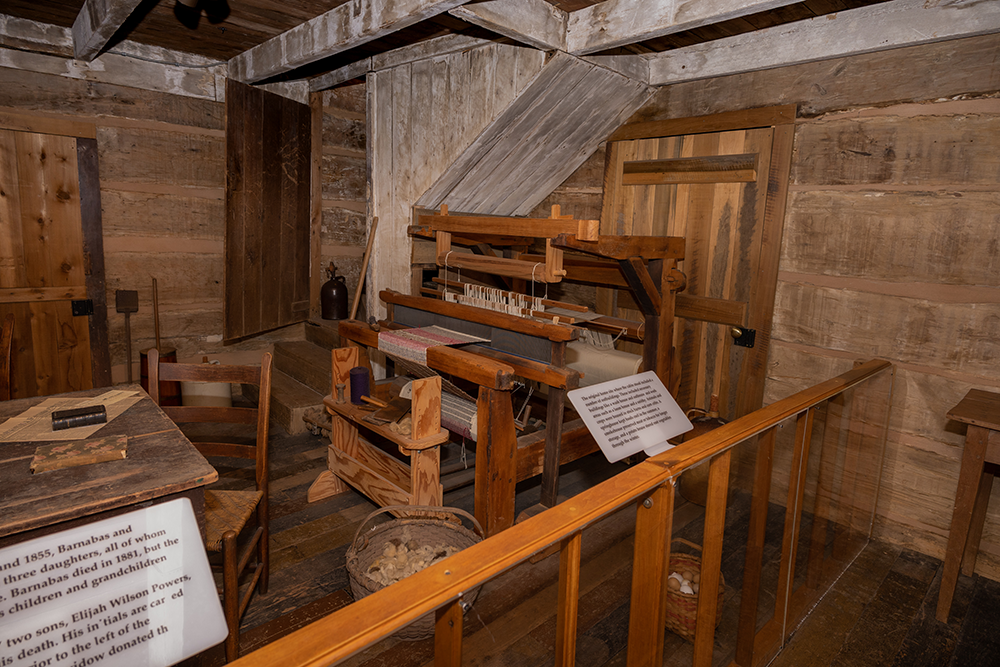
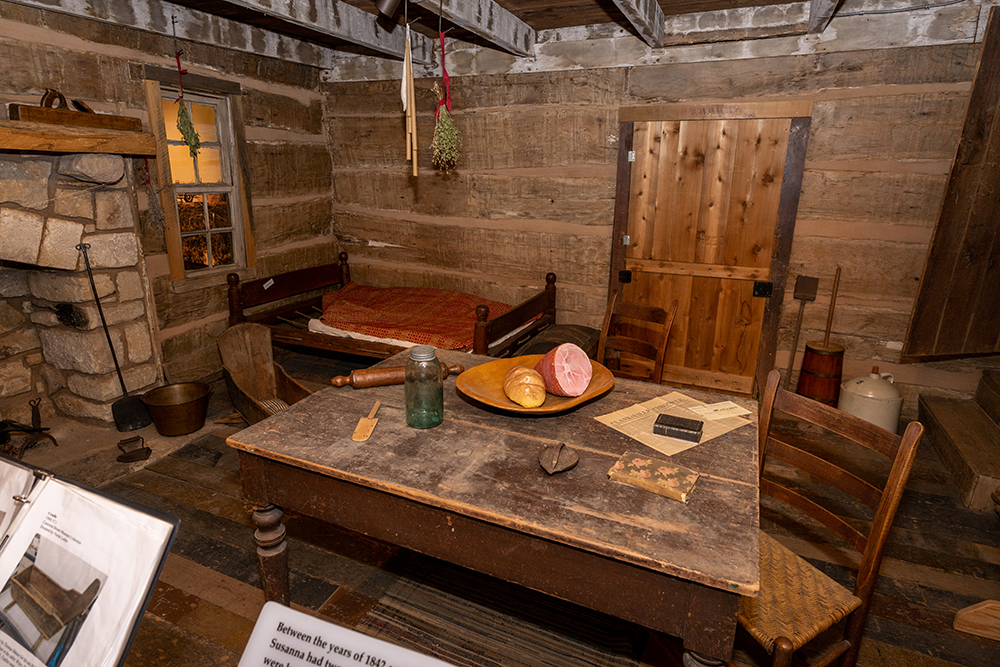
Make your own… everything
Baking bread can make your house smell homier, but today you can always go to the store or order online if you can’t make something you need. In the 1840s, if you couldn’t make it, you couldn’t have it. The Powers family made their own furniture, clothes, most household items –even the house itself was DIY. As you walk into their house, look for a butter churn in the corner and butter paddle on the table. The cream from a bucket of milk would be skimmed from the top and put into the butter churn. Someone would sit for hours to move the cream around inside the churn until it became a thick chunk of solid butter. The paddle was used to gather the fresh butter and shape it into a pat that could be stored.
No electricity, just candles and grease
Candles today are pleasantly-scented ambient additions to a home’s atmosphere, but in an 1840s log home, they were a necessity. Like everything else, the Powers family would have made their own and would set aside a day to make enough candles to last the entire year. Hand-dipped candles made from tallow – a waxy substance from animal fat – were the most common. The family may have also used a metal candle mold, like the one sitting above the fireplace, as a less time-consuming way to load up on candles. Grease lamps, like the tiny one sitting on the table, were a cheaper lighting solution. Grease left over from cooking dinner could be poured into the metal disc, but the light was dimmer than candles and created a thick, odorous smoke.
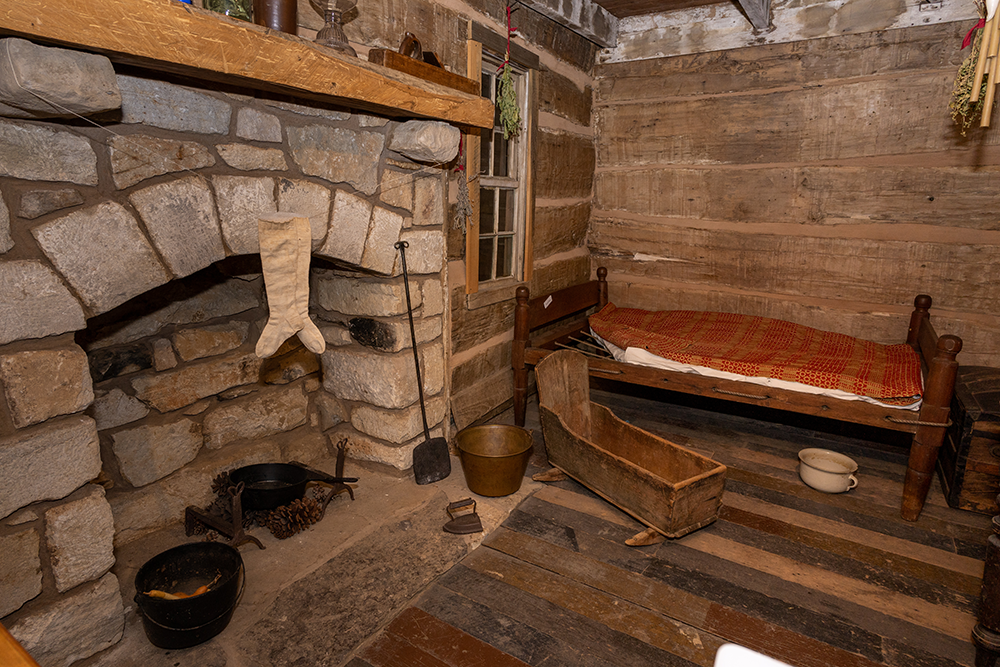
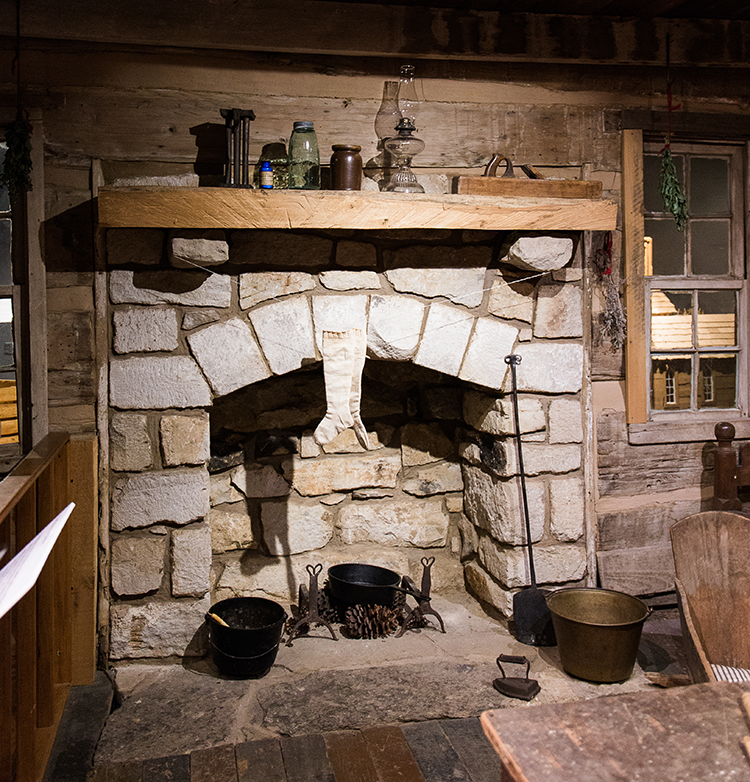
Photo by Kathryn Ely
Good night, sleep tight
Instead of an ergonomic mattress on a box spring, the Powers’ beds would have been a sack full of straw suspended by ropes in a wooden frame. The origin of the phrase “good night, sleep tight” comes from the need to tighten a bed’s ropes so that the mattress didn’t sag. The mattress wasn’t always stuffed with straw, but families used materials that were easy to come by, and that was most often straw or hay. If they had enough cotton or wool, those materials would have been used as well. Barnabus and his family may have even had a featherbed to help them keep warm during the cold winter months.
Close quarters
The Powers’ log home is only one room. A visible set of stairs presumably leads to a loft that is no longer there. Lofts were common in log homes because they caught the rising heat from the fireplace in the winter time, making for a much cozier place to sleep. Even so, a cabin this size would have housed a family of five or more. No one had their own bedroom, and many siblings would share a single bed. Outhouses were often several yards away from the house. During cold winter nights, the bathroom was the large chamber pot kept under the bed that everyone used. One family member was appointed to empty the pot in the morning.
You can visit the Powers Family Log Home on the Museum’s lower level in Memory Lane. Learn more about the items in the house and keep a lookout for everything featured in the binder mounted to the exhibit.

Meghan E. Gattignolo
Meghan E. Gattignolo is a freelance writer and longtime Clarksville, TN resident. She loves to obsess about historical subjects and annoy her family daily with unsolicited random facts. Meghan holds a History B.A. from Austin Peay State University and lives in town with her husband and two daughters.
Becky Wood, Technical Writer, edits each blog post. Maegan Collins, Marketing Communications Manager, prepares photographs and visual images as well as prepares the blog posts for the web.